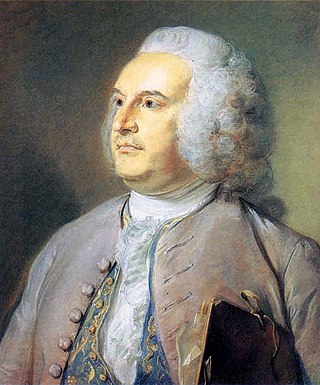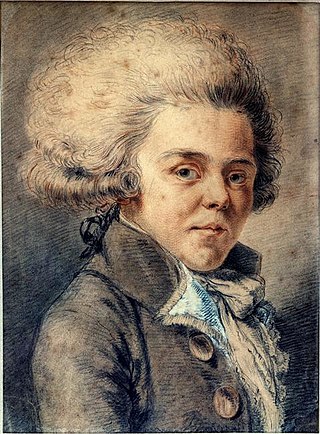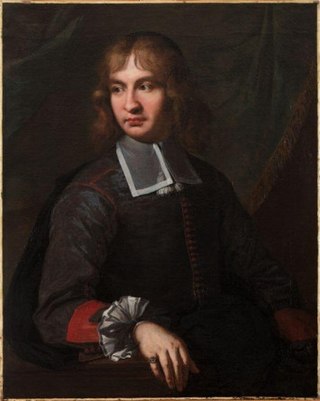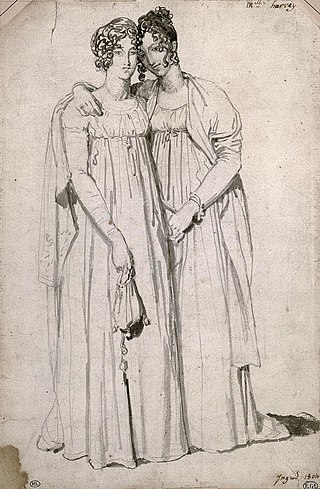
Jean Baptiste Alphonse Déchauffour de Boisduval was a French lepidopterist, botanist, and physician.

Jean-Baptiste Isabey was a French artist during both the First Empire and the Congress of Vienna.

Pierre Contant d'Ivry, was a French architect and designer working in a chaste and sober Rococo style and in the goût grec phase of early Neoclassicism.

Jean-Baptiste François Xavier Cousin De Grainville was a French writer who wrote a seminal work of fantasy literature: Le Dernier Homme (1805). This was the first modern novel to depict the end of the world.
Bene merenti de patria is a silver medal created in 1923. It is awarded by the Quebec patriotic Saint-Jean-Baptiste Society to a "compatriot having rendered exceptional services to the homeland".

Jean-Michel Chevotet was a French architect. He and Pierre Contant d'Ivry were among the most eminent Parisian architects of the day and designed in both the restrained French Rococo manner, known as the "Louis XV style" and in the "Goût grec" phase of early Neoclassicism. His grandson was Pierre-Jean-Baptiste Chaussard.

Napoleon I on his Imperial Throne is an 1806 portrait of Napoleon I of France in his coronation costume, painted by the French painter Jean-Auguste-Dominique Ingres.

Pierre-Jean-Baptiste Chaussard, known as Publicola Chaussard, was a French writer, art critic, poet, revolutionary, politician and follower of Theophilanthropy. According to Michaud in his Biographie universelle, Chaussard was "a writer who would perhaps have failed to make a lasting reputation if he had lived under other circumstances".

Jean Valade was a French painter and pastel artist of the Rococo movement, specializing in portraiture.

Jean-Baptiste Boisot was a French Benedictine Abbot, bibliophile, and scholar. He founded the first French museum on his death in 1694 when he bequeathed his personal collection of artwork and manuscripts to the Benedictine monks of Saint-Vincent, Besançon. This collection became the Besançon Municipal Library.

Le Dernier Homme is a French science fantasy novel in the form of a prose poem. Written by Jean-Baptiste Cousin de Grainville and published in 1805, it was the first story of modern speculative fiction to depict the end of the world. Considered a seminal early work of science fantasy, specifically of the Dying Earth genre, it has been described by Gary K. Wolfe as "A crucial document in the early history... of what became science fiction".
André-Joseph Panckoucke was a French author and bookseller. He was the first of the Panckoucke family directly or indirectly involved in French publishing.
Pierre Paul Gobet, called Dorfeuille, was a French actor and playwright.
Jean-Baptiste Luton Durival was an 18th-century French historian, diplomat and Encyclopédiste.

A Knight at Prayer in a Chapel, Preparing Himself for Combat is an oil on wood painting by French painter Fleury François Richard, created c. 1805. It is held at the Musée des Beaux-Arts de Lyon, since 1981.

Elizabeth or Elisabeth Harvey was an English artist known for Malvina Lamenting the Death of Oscar and for portraits of Jacques-Henri Bernardine de Saint-Pierre and his family.










